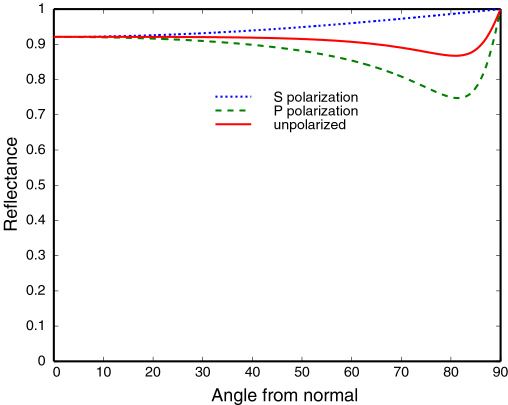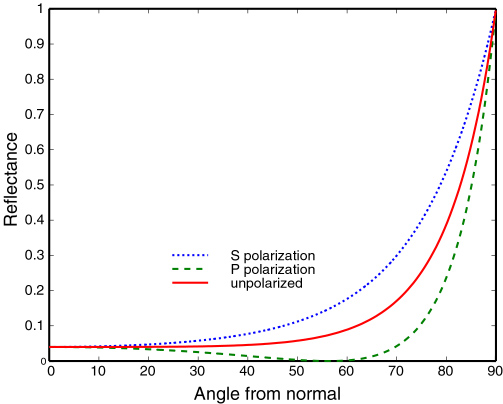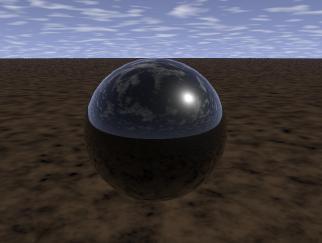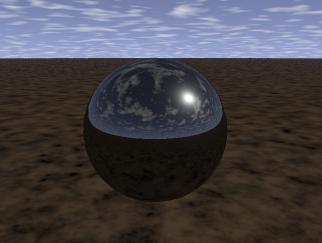
Augustin Jean Fresnel (1788-1827), an early proponent of the wave theory of light propagation, derived the formulas that are still used to predict the reflectance of smooth surfaces, which depends solely on the (complex) refractive index and the angle of incidence. For conductive materials (i.e. metals), the effect of Fresnel reflectance is subtle; for aluminum, reflectance remains above 86% for all angles. Here's the reflectance for pure aluminum at 550 nanometers (greenish-yellow):

For dielectric, or non-conducting, materials, the effect is very strong: most glasses and plastics have refractive indices around 1.5, giving a reflectance of only 4% at normal incidence, but 100% at grazing. This effect, in fact, is what makes polished metals look like metal, and polished glass not look that way. It's also why it's hard to comb your hair in a shop window; you are looking at the angle of minimum reflectance. Here's the reflectance for a typical dielectric (N=1.5)

Notice the polarization effect: at around 57°, the reflected light is totally polarized. This is called the Brewster angle. This polarization effect is why polarized sunglasses reduce glare from horizontal dielectric surfaces, like water or the hood of your car. They don't do much for glare from metal surfaces, as you can see from the plot for aluminum. In computer graphics, it is traditional to ignore polarization, assuming the camera and all light sources are unpolarized, so we use the average of the two polarizations. This isn't always a good approximation, however; the light from a clear sky shows fairly strong polarization, and can give visible effects.
The following two images illustrate the importance of the Fresnel reflectance for dielectrics. They were both rendered in Alias PowerAnimator with “Blinn” shaders. One uses the Fresnel reflectance, or at least Alias's version of it, accessed by setting “Specular Rolloff” to 0.96. This decreases the reflectance at normal incidence to 0.04, which is correct for a refractive index of about 1.5, typical of dielectrics such as glass and plastic. The other sphere uses a constant reflectance with angle. Both are black and opaque.
With Fresnel reflectance

Alias SDL file for this image
Without Fresnel reflectance

Alias SDL file for this image